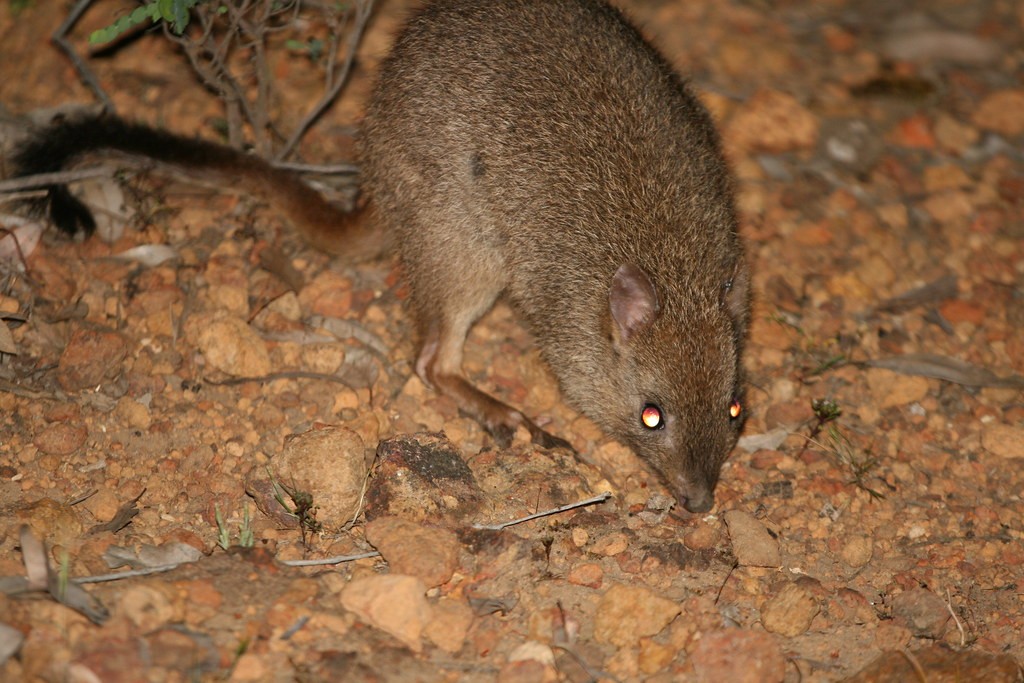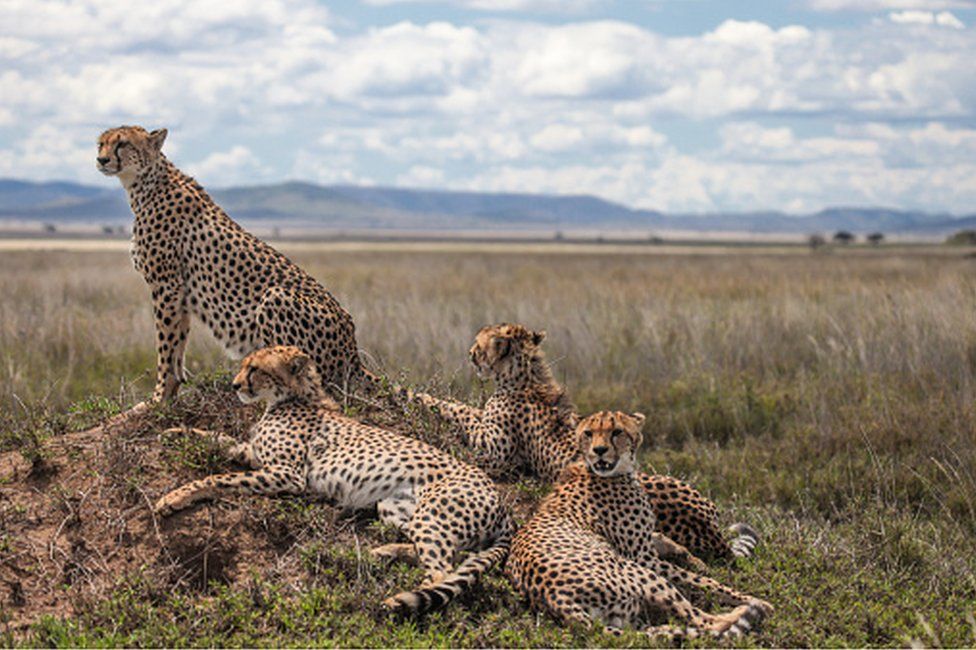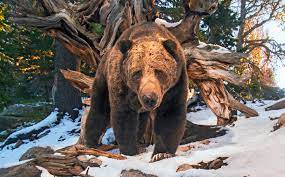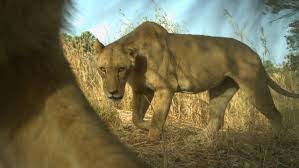It has been confirmed! An animal seen in Calvados, France was a male wolf. They have not been seen in this part of France for over 100 years.


Wildlife and conservation new, wild travel information and links for booking
It has been confirmed! An animal seen in Calvados, France was a male wolf. They have not been seen in this part of France for over 100 years.

In Nigeria, the Wildlife Conservation Society has been taking a projector to remote villages around the cross gorillas range.
As in other parts of the world, often the humans that live on the edge of the wild animals range rarely see the animal. Indeed, it is often the case that the only locals who have seen the animal are hunters.
Might it be as simple as showing the locals what we are trying to protect?
It is essential to get local people on board when you are trying to protect mega fauna. One of the difficult things with many of the large mammals is that they breed slowly. As a result it is important to get human populations on side, as even a small number of animals killed can lead to the eventual loss of a whole species.
Conservationists appear to have to learn the same lesson over and over again. Without local people on side, you are almost always fighting a loosing battle. Local populations need to both have a great love for the wildlife that they live alongside, but also the ability for the communities to gain from the presence of the wildlife – whether this is because they get direct finance, or because there are jobs for the people in the village.
With the improving covid situation worldwide finally we can return to visiting wild areas of the planet. Not only has the tourist industry missed this basil so it has had a terrible impact on conservation efforts in many parts of the world.
This is because in many cases there is not enough money to protect animals without out.the tourist dollars that they bring in. Since covid start there have been very few tourists arriving in many of these countries.
Yet this situation is changing. Now, many countries in Africa are considered completely safe. There have been less infections across the whole of Africa than have been reported in the UK – now while some of this may be down to poor health care (there are slightly more people who have died from covid in Africa than the UK), clearly your risk in Africa is far lower than your risk in the UK.
My family will be travelling to Kruger in South Africa in August! Obviously I hope for this to create many stories for this site and videos for the sister YouTube channel.
My other aim is to be able to list all of the public rest stops on the website after this trip.
What does this mean?
Currently we only list the private reserves along the borders of the Kruger. These are fantastic ways of seeing wildlife. You will be pampered indeed spoilt, by the wonderful treatment you will receive.
However, even amongst wealthy people, the cost of these lodges can become prohibitive – a one week safari in some of these places can run to $10,000 or more per person.
Of course on this website we wish to cater for people who have large amounts of money, however we are not in this category and we want to cater for everyone.
Self-drive safaris are something that many people greatly enjoy. With a little bit of research you can quickly become competent at finding the animal to yourself (sighting maps in each rest stop help). There is something liberating about entering an area so large, and being able to go where you like as you like, exploring whichever part of the park you prefer.
On self-drive safaris your accommodation is different. Generally you have the choice of setting up your own tent, taking a hut, or in some places a mid option is a a fancy safari tent. These obviously very in price, but even in the most expensive you are likely to be spending less over your whole holiday then you would for one night on a private reserve.
For those who could afford it I would recommend to do a self-drive safari with a couple of days on a private reserve at the beginning or end of your trip.
DO CONSIDER BOOKING TRIPS ABROAD. THESE RESERVES WILL BE LESS CROWDED THAN NORMAL, AND WE CAN STOP RESERVES BEING TURNED INTO HUNTING AREAS IF WE RETURN SOON ENOUGH.
All of the partners on this site have very reasonable policies on cancelation if this is necessary because of Covid.
There is also the advantage at the moment, that most airlines have a simple policy of cancellation if advice suggests that travel is not wise.
European Bison (or close relatives) were once an important part of the UK fauna, as the largest UK mammal, they had the strength to push down trees and therefore had an important role of ecosystem engineer.
The project is aimed at starting by reintroducing these animals into Blean woods near Canterbury. I have walked in Blean woods a number of times, as it is close to where my father works some of the year. Only a small herd will live in this wood (alongside iron age pigs, longhorn cattle and exmoor ponies) but these 4 species are likely to have a great deal of impact on the woodland.
For the time being, the Bison will live in a 150 hectare enclosure, with no footpaths, never the less the hope is that descendants of these pioneers could be released into truly wild parts of the UK.
Admittedly, the European Bison probably never lived in the UK, but the steppe bison an incredibly similar animal did.
A major part of the rangers job will be to take people on walks in the enclosure. This will help people get used to the idea. After all, there are currently no wild animals in the UK that weigh anywhere near the tonne that these animals would weigh.
These gentle giants would do wonders for the British ecosystem, and I for one look forwards to the time when seeing European Bison is like spotting highland ponies or wild horses in different parts of the country.
The Brush-tailed Bettong was almost lost from the whole of mainland Australia, after Europeans introduced cats and foxes from home.

As an ecosystem engineer (like the European Beaver in the UK) its absence has caused problems for the greater ecosystem as a whole. Looking like a cross between a rat and a kangaroo it eats a variety of fungi. When they dig up fungi and truffles, they spread fungal spores to the wind, as well as on their feet. without them many fungis may well disapear, leaving soils far less healthy.
40 were translocated, and the move has gone so well, that some of the individuals have already started dispersing into the surrounding area.

There is an impressive wealth of cats living in India. From the Indian tiger (known throughout the world) to the Asiatic lions last home- the gir forests of west india (the asiatic lion once roamed across Asia, throughout southern Europe, across northern and western Africa – therefore there are probably more “Asiatic” lion in Africa than in Asia), 12,000-14,000 leopards remain in the country. The snow leopard also still roams mountains within the country. It also still has a population of clouded leopards. In other words, in terms of big cats, it has all species except Jaguar.
Continue reading “South African cheetah to be introduced into India”The money will be used to expand wildlife corridors, which will allow easier gene flow, as well as benefitting all wildlife in the area – including prey which in places is severely lacking.
Currently agreed requirements for the animal to be taken off the endangered list is 3 established populations of a couple of hundred each.
The changes would also benefit key deer, Florida manatee and loggerhead sea turtles.
It is rare that conservation efforts are supported on all side. In other areas Republicans have not been good at supporting Conservation in the last few years – let us hope that this will lead to a change in the wider Republican party.
Having only green-lit beaver reintroduction in the UK in the last decade, there are large numbers of places that they will return to over the next few years.

Back in 1975, the American Grizzly bear was declared endangered. With only minor differences, the American Grizzly bear is the same species as the European bear, that lives from Western Spain, through Europe to the Kamchatka bear of far Eastern Russia.
In 1975 the USA lower 48 states grizzly bear population numbered somewhere between 136 animals and 312, so it was essential that it was protected. Nowerdays the same 48 states have a population of around 1500, but given that this number would have been as high as 50,000 when people started migrating to the USA in large number, this recovery is only just getting going.

In some ways, recent discoveries should have been made long ago. Asiatic lions historic distribution stretched across Asia, north Africa, and Southern Europe.
Given that the Barbary Lions historic range covered the central part of this huge area, it seems reasonable that the Barbary lion and the Asiatic lion should be closely related. Yet it was only in the last few years that genetic evidence has been shown that this is indeed the case.










Join as an ambassador supporter to
support this site, help save wildlife
and make friends & log in

